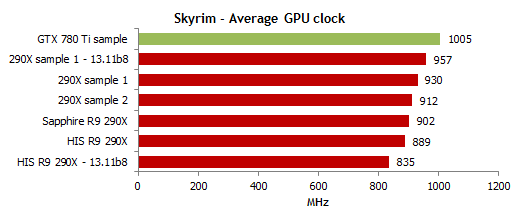Chimpzilla’s Radeon R9 290 and 290X review copies appear to be performing better than retail versions.
Techreport penned a review which said that AMD upended the high-end graphics market by offering performance competitive with Nvidia’s existing products at substantially lower prices. The R9 290X captured the overall GPU performance crown, wresting it away from the GeForce GTX 780 and Titan.
However, some of its readers said that Radeon R9 290X cards bought at retail do not seem to perform as well as the review units AMD supplied to the press.
The retail R9 290-series cards had the same basic hardware and specifications as the review samples, but at least some retail R9 290-series cards seemed to operate at lower clock speeds.
Techreport got on the blower to AMD which investigated and found that the fans on some retail cards were not spinning as fast as expected, and the reduced cooling capacity resulted in lower clock speeds.
It issued a fix in the form of a software update. The Catalyst 13.11 beta 9v2 driver sought to equalize blower speeds from card to card by monitoring RPM directly, thus hopefully improving performance on retail cards that seemed to lag behind.
Techreport wanted to test a retail card but could not afford it, until Nvidia offered to buy a couple of retail R9 290X cards for them to test. Nvidia did not touch the cards which were shipped from New Egg. It looked like Nvidia were happy to foot the bill because it was fairly sure that AMD would look very bad.
It tested two Radeon R9 290X cards: one from HIS and the other from Sapphire. Apart from the stickers on the cooling shrouds, the two look to be identical and to the two R9 290X review samples.
The testing showed that AMD’s software fix to equalize blower speeds in the Catalyst 13.11 beta 9v2 driver release definitely improves the worst of the low-clock-speed problems. The fix appears to raise fan speeds overall for 290X cards, slightly for our initial review unit and more dramatically for our HIS retail card.
However the initial R9 290X review unit was superior to the two retail cards tested. Even with the blower speed fix working the first review unit runs at 5-10 per cent higher clock speeds than the retail cards, depending on the workload. That deficit translates into a 5-10 per cent advantage in frame rates, though usually toward the lower end of that range at 4K resolutions and lower voltage.
The initial review was skewed so that the Radeon R9 290X so that the card’s performance was better than it should be and it was quieter.
It thinks that AMD chose to include some of its very best Hawaii GPUs aboard the review samples it supplied to the press.

Source: TechEye






